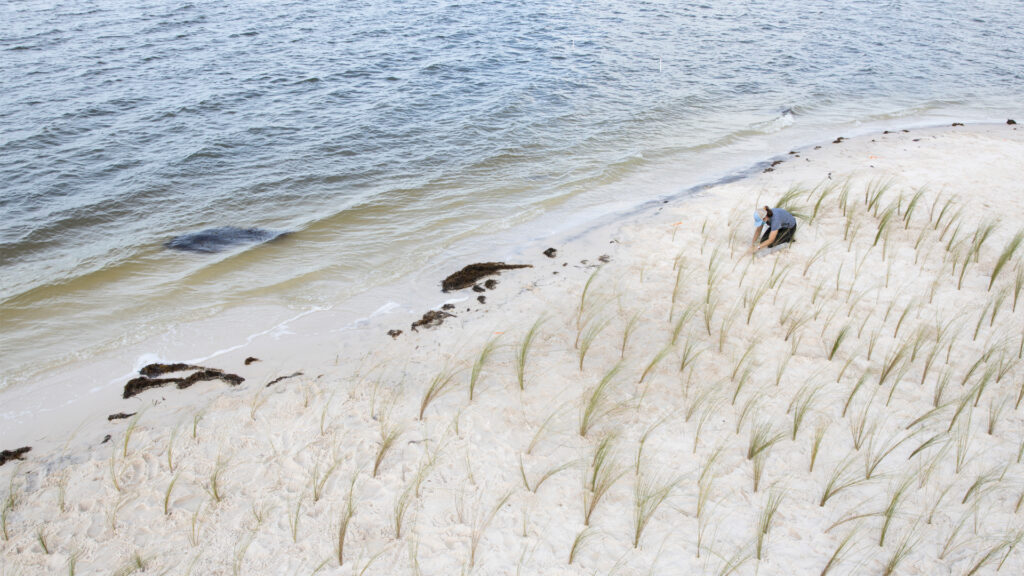By Megan Winslow, UF/IFAS Communications
Promoting the idea of installing a living shoreline was once a losing battle.
Savanna Barry recalls a colleague who attempted to introduce the concept during a gathering of marine contractors about a decade ago.

“He was asked to leave,” said Barry, a Florida Sea Grant regional Extension agent for the Nature Coast. “Late last year, the same organization invited him to come give a talk about living shorelines at their annual conference. So, there is a change in thinking about this.”
A growing number of contractors and private owners of coastal property are considering installing living shorelines, according to research Barry and her colleagues conducted and recently published in tandem with the Mississippi-Alabama Sea Grant Consortium (MASGC).
In contrast to hardened structures like seawalls and bulkheads, living shorelines promote healthy ecosystems and stabilize coasts through the strategic placement of natural materials like native vegetation, rocks and oyster shells. Generally, they are cheaper to install and require less maintenance. And, perhaps most persuasively, they act as natural wave breaks.
“After shorelines are damaged in hurricanes — especially when we see widespread seawall failures but living shorelines usually faring very well — this opens people’s minds to the fact that a nature-based solution may work better than they may have originally expected,” Barry said.
In the study, scientists and Extension agents provided education about living shorelines to contractors through a series of workshops and trainings — and to property owners through demonstrations, site visits, courses and an informational website.
In the Sunshine State, for example, Florida Sea Grant began offering a two-day course for marine contractors in 2019. Since that time, agents have conducted 12 training sessions. Study evaluations indicated 58% of the 191 participants would “definitely” or “likely” add installation of living shorelines to their services.

To educate property owners, Florida Sea Grant developed a three-day coastal shoreline restoration module for UF’s Florida Master Naturalist Program. Instructors taught the course 35 times to 593 participants living in 16 Florida counties. Assessments revealed a 46% knowledge gain about living shorelines, according to the study.
Despite positive strides, the study’s authors acknowledge barriers to living shoreline installation, namely, in the form of strict regulatory requirements. These include rules regarding the height of breakwaters as well as the distance from shore the living shoreline may extend.
“Permitting for living shorelines can sometimes take longer than permitting for a seawall, and for some people that process can be either too daunting or too frustrating,” Barry said. “But state officials are working hard to improve the rules.”
To learn more about living shorelines, contact the nearest Florida Sea Grant county Extension agent.
This piece was originally published at https://blogs.ifas.ufl.edu/news/2024/06/26/study-reveals-growing-interest-in-natural-shorelines/.
Sign up for The Invading Sea newsletter by visiting here. If you are interested in submitting an opinion piece to The Invading Sea, email Editor Nathan Crabbe at ncrabbe@fau.edu.



